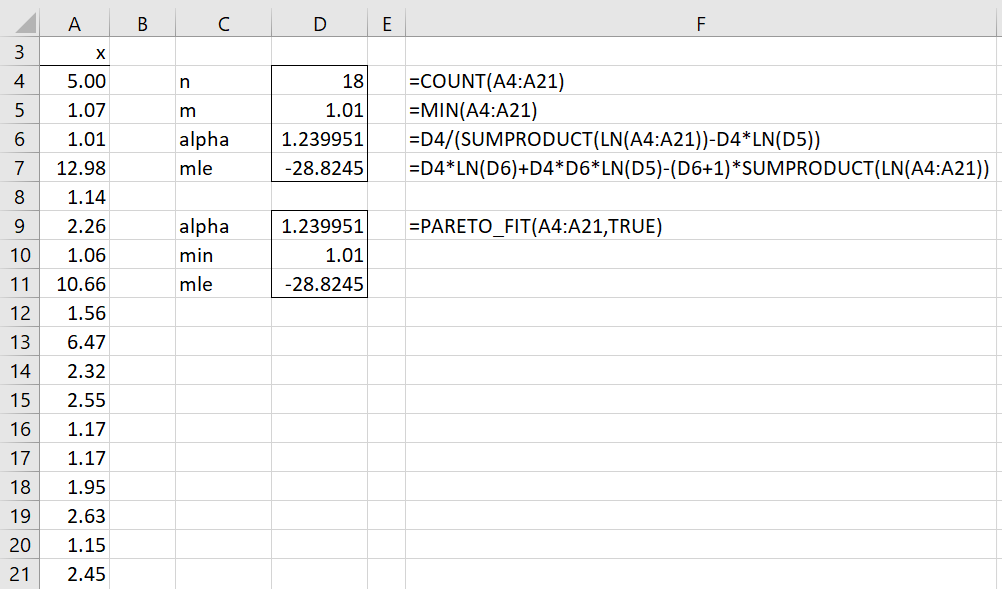The log-likelihood function for the Pareto distribution with scale parameter m and shape parameter α for the sample {x1, …, xn} is
Therefore, the log-likelihood function is
Clearly, the larger the value of m, the larger the value of LL. Since xi ≥ m for all i, we use the estimate
The alpha value that maximizes LL is

The proof of this is based on Newton’s method and uses calculus.
Example 1: Repeat Example 1 of Method of Moments: Pareto Distribution using the maximum likelihood approach.
The approach is shown in Figure 1.
Figure 1 – MLE for Pareto distribution
We see from the right side of Figure 1 that the maximum likelihood estimate is α = 1.239951 and m = 1.01.
We also show the estimation using the PARETO_FIT function, as described in Real Statistic Support for MLE. Note that since the MLE = -28.8245 estimate in Figure 1 is larger than the -29.0564 figure shown in Figure 2 of Method of Moments: Pareto Distribution, we conclude that this estimate is better than the method of moments estimate.
Examples Workbook
Click here to download the Excel workbook with the examples described on this webpage.
References
Wikipedia (2021) Pareto distribution
https://en.wikipedia.org/wiki/Pareto_distribution
Rytgaard, M. (1990) Estimation in the Pareto distribution
https://www.casact.org/sites/default/files/database/astin_vol20no2_201.pdf


Both:
* Figure 1- MLE for Pareto distribution (from this page)
* Figure 2- Revised Fit (from Method of Moments: Pareto Distribution)
have the exact same formula signature (=PARETO_FIT(A4:A21,TRUE)) but end up with different alpha and mle parameters; as you note. You then assert that the larger of the two MLEs suggests a better estimate.
Is this correct?
Hi Mario,
Yes, this is correct. MLE is an abbreviation of maximum log-likelihood estimate. -28.8245 > -29.0564.
Charles
Indeed. -28.8245 > -29.0564
However if you look carefully the formula is referencing the exact same range and values in both web pages; A4:A21 when you visually inspect them.
So the question is which is correct output for the =PARETO_FIT(A4:A21,TRUE) function reference.
Mario,
One of the formulas uses the PARETO_FIT function and the other uses PARETO_FITM.
Charòes
Ah…That clears up the confusion on my part:
Method of Moments => PARETO_FITM
Maximum Likelihood Estimate => PARETO_FIT
Missed the ‘M’ qualifier on the function with the other example.
Thank you.